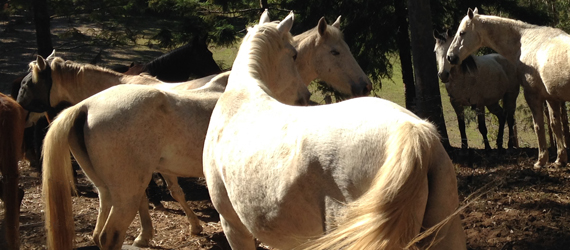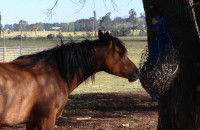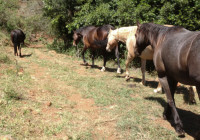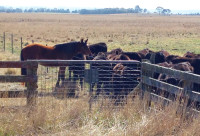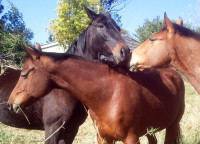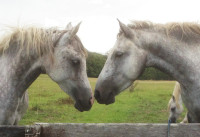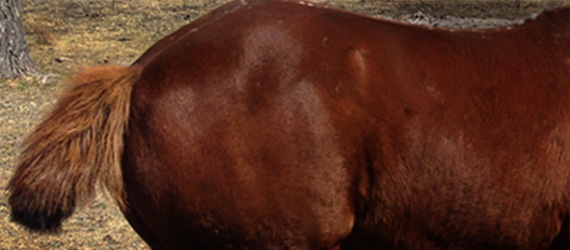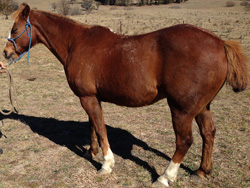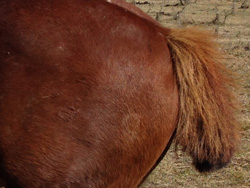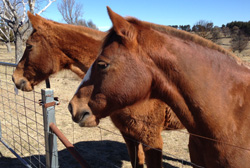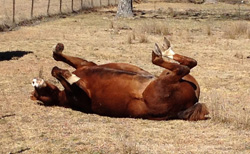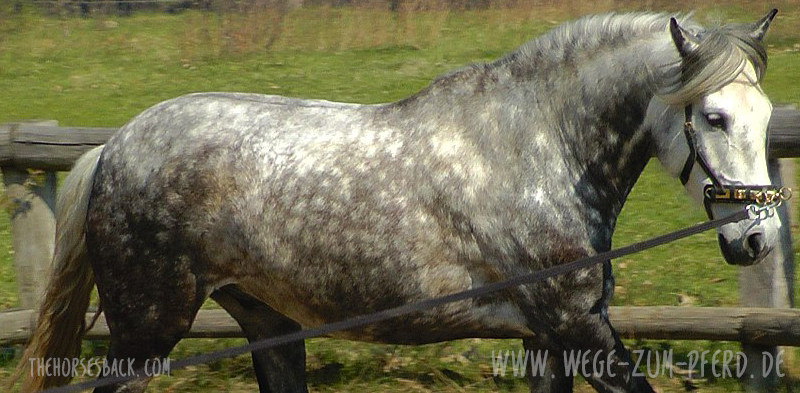 Thinking as a bodyworker, if there were one thing I could change in the training of ridden horses, it would be the way that many people lunge their animals.
Thinking as a bodyworker, if there were one thing I could change in the training of ridden horses, it would be the way that many people lunge their animals.
I’d be so happy if the standard practice were a simple, gentle and biomechanically correct approach that brings profound improvements to the horse’s back health and readiness for riding.
It’s not a science and it needn’t be. For most people, it’s easy to learn, easy to do and easy to continue with. At even a basic level, it conditions the horse to carry weight and to not only balance itself, but to move effectively while carrying the weight of the rider.
Every rider and horse can benefit from this, no matter the ridden goals or discipline. Horses may just happen to have a back we can sit on, but their bodies are not designed to function in the way that we ask.
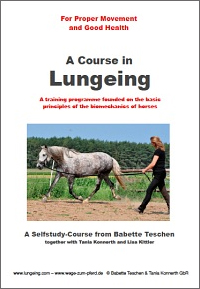 Here is a simple and affordable resource that will help you to do it better: A Course in Lungeing. It’s something I’ve recommended to bodywork clients over the years, with positive results. (It does involve ditching the gadgets and moving with your horse, but you don’t mind that, do you?)
Here is a simple and affordable resource that will help you to do it better: A Course in Lungeing. It’s something I’ve recommended to bodywork clients over the years, with positive results. (It does involve ditching the gadgets and moving with your horse, but you don’t mind that, do you?)
Let’s look at why I believe it’s so good.
© All text copyright of the author, Jane Clothier, https://thehorsesback.com. No reproduction of partial or entire text without permission. Sharing the link back to this page is fine. Please contact me for more information. Thank you!
** Questions, thoughts or comments? Join us at The Horse’s Back Facebook Group.
What often passes for lungeing
Oddly enough, many people think you don’t have to learn anything in order to lunge a horse.
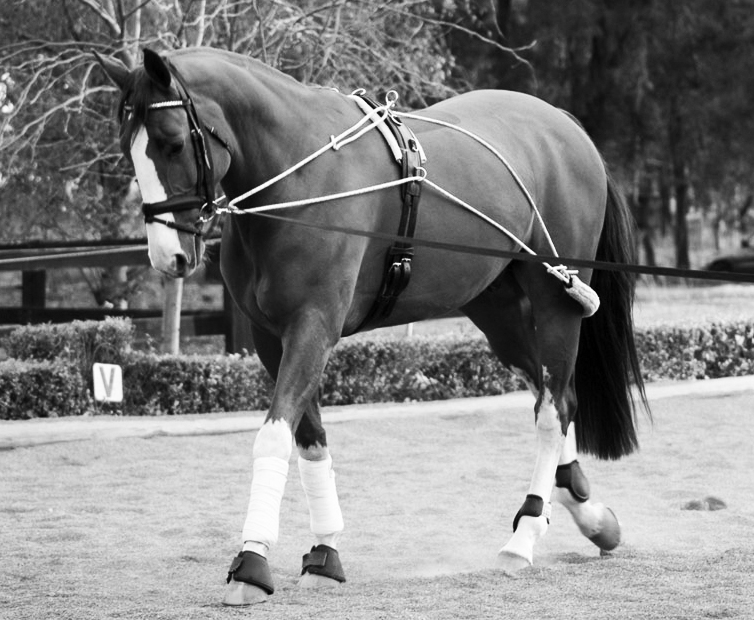
It’s assumed that you just need to buy the right equipment. In all too many cases, it’s then a matter of sending the horse in a circle, achieving as much trotting in as short a time as possible.
There are plenty of goals, including many that don’t have much to do with preparation for biomechanically correct movement while being ridden.
Lungeing to warm up the horse. Lungeing to build topline. To get the horse ‘into an outline’. To make the horse listen. To make the horse understand. To ‘get the buck out’. To get weight off the horse.
It’s also what many people do when they haven’t got time to ride. It’s not good and it’s not the best option for any horse.
It takes time to prepare the horse’s back
Lungeing shouldn’t be part of a rush. It isn’t a ‘hack’, ie. some kind of shortcut or saving of time and effort, adopted to fill the gap between feeding and going to work on days when there aren’t enough hours for riding.
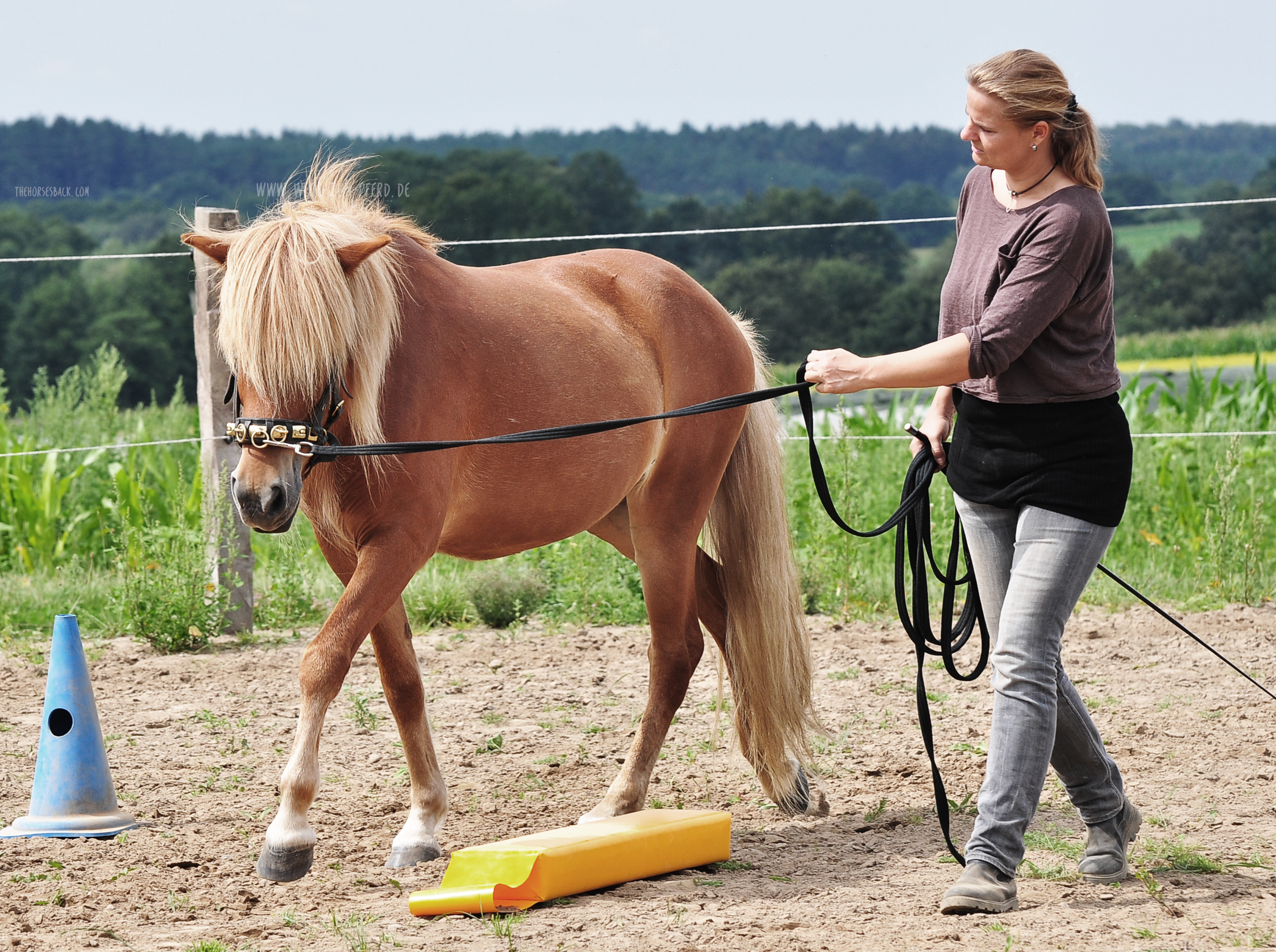 In the last few years, a renewed interest in a more classical, biomechanically correct approach to training has brought simple, in-hand training techniques to wider audiences. Older methods that aimed to prepare horses for ridden careers, which have been overlooked in the great rush to do everything faster, have come back into focus.
In the last few years, a renewed interest in a more classical, biomechanically correct approach to training has brought simple, in-hand training techniques to wider audiences. Older methods that aimed to prepare horses for ridden careers, which have been overlooked in the great rush to do everything faster, have come back into focus.
This doesn’t involve sending horses in circles around a largely stationary human. It involves walking with the horse, working with it and shaping it. It’s about educating the horse to move and to carry itself in a way that is then taken forward into ridden work.
Lungeing for ‘everyhorse’
While horses differ enormously in terms of conformation, their needs are basically the same for carrying a rider. This is true no matter what discipline their athletic capabilities and fate destine them for. It is equally true for the trail riding horse.
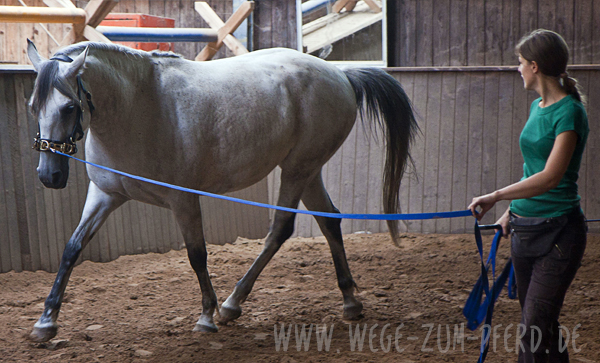
Biomechanically correct lungeing prepares the horse to do this. Put very, very simply, this means lungeing so that on a bend, the horse weights inside and outside legs evenly and doesn’t lean in.
Instead, this even weighting means it is able to freely lift up through the base of neck and withers, between the shoulders (i.e. the thoracic sling). Meanwhile, the hindquarters are active and load bearing. The horse moves lightly with elevation and is able to do so freely and at all paces.
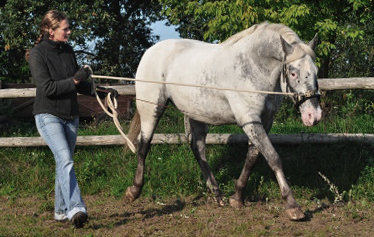 Biomechanically correct lungeing helps to develop the back and teach self-carriage, which makes it humane as well as effective.
Biomechanically correct lungeing helps to develop the back and teach self-carriage, which makes it humane as well as effective.
Why would anyone wish for less for their horse? The wonderful thing is that it’s not hard to do.
Therapeutic benefits of correct lungeing
As a bodyworker, I have repeatedly witnessed the improvements in horses that were helped to work correctly in this way.
Clients and associates have had success rehabilitating horses, including (and especially) ex-racehorses with serious sacroiliac dysfunction.
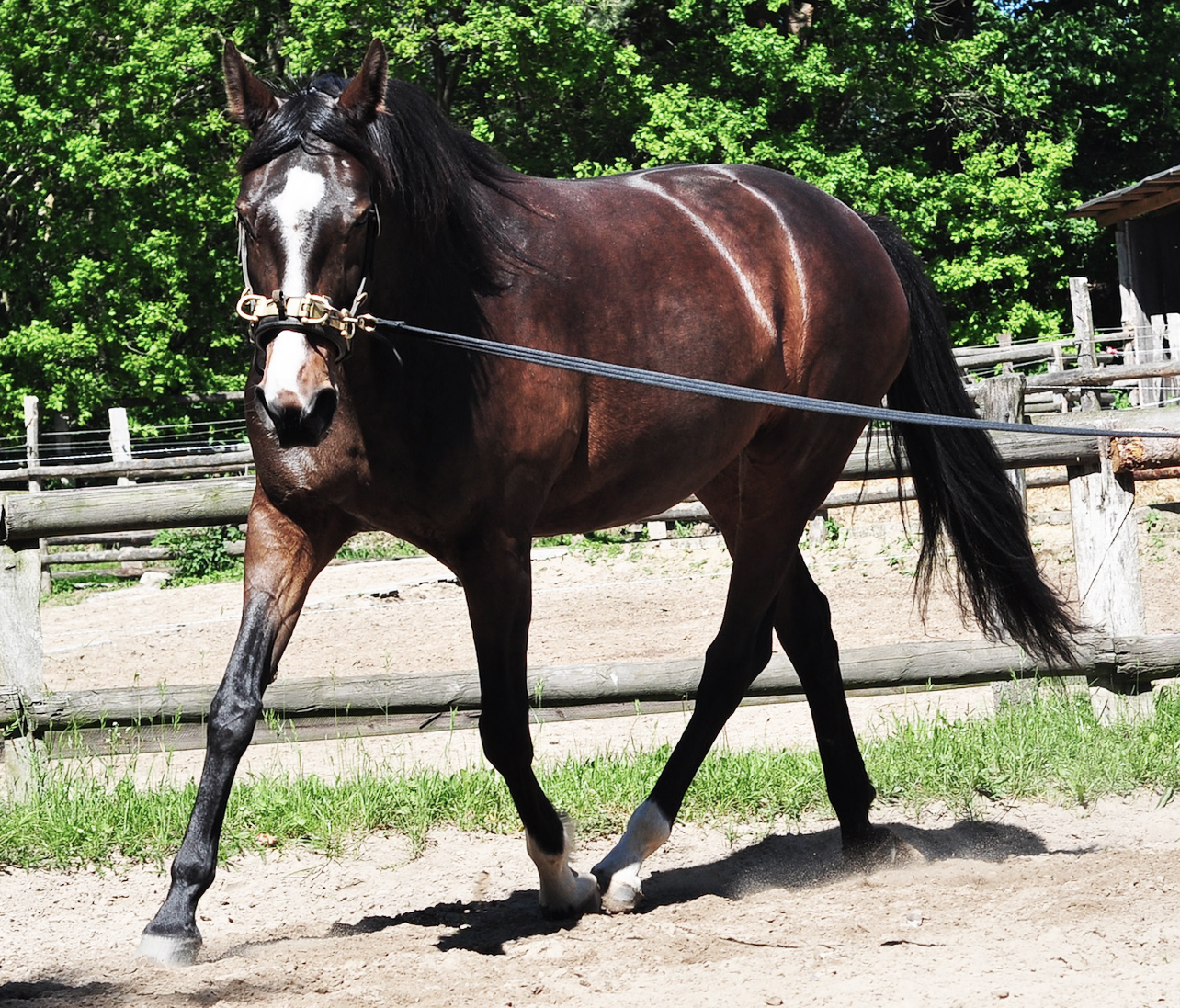
The strength in their bodies, the suppleness, and the ability to work softly in a magnificent shape without any kind of restriction or force is wonderful to see.
I’ve also noticed how much horses seem to enjoy working in this way, as their body and movements develop and their spirits lift. Pride becomes visible in their movement and attitude.
These horses go on to flow under the saddle. Again: who wouldn’t want that for their horse?
The thing is, once this approach is learned, the improvements come quickly. Dramatic changes can happen through 2-3 short sessions a week. It’s not time consuming at all – and you don’t need to be into dressage to do it.
Which brings us to A Course in Lungeing.
So how do we relearn lungeing?
A Course in Lungeing makes these time-tested approaches available to the owners of any horse, no matter what breed, age or conformation, or ridden discipline.
It’s perfect for people who don’t want to study for qualifications or who can’t afford or manage to attend clinics with classical trainers (you can do this in your paddock).
The course was developed by German horsewoman, Babette Teschen, based on her many years of teaching correct lungeing in workshops in Europe.
Lunging training stood out as being really helpful for my work,” writes Babette Teschen. “In as much as you learn to lunge your horse according to biomechanical principles, you are doing what is best for the health and spirit of your animal partner: you give it the means to fulfill what you want of it in a healthy way.”
What I love is their strong focus on musculoskeletal health, so much so that they’ve included contributions from an equine osteopath and an equine acupuncturist.
More info and to purchase ‘A Course in Lungeing’
What you receive with ‘A Course in Lungeing’
With this training, you can help your horse to learn to bend in a circle instead of falling in, to raise its inner shoulder, and to move with the hindquarters tracking the forelegs (think of a train on the tracks rather than a motorbike on a bend).
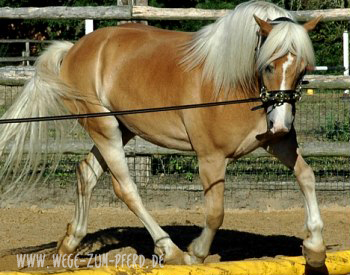
When your horse can do this, it will be able to free up the neck and ‘let go’ from the withers. It can develop rhythm and freedom of pace, with good ground coverage. The horse’s back muscles are freed up to do their work effectively, with its hindquarters taking up the load.
What you’ll receive:
- View the first 30 pages of the book for free.
- 250 pages of instruction material plus videos of various exercises.
- Extensive basic information of anatomy and biomechanics.
- Clearly presented exercises that will help you and your horse to master the problem of moving in a circle with ease and enjoyment such as the Cone Slalom, the Stepped Pathway, and many more.
- Photos and diagrams with explanations and illustrations.
- A Media Library with videos, and a substantial .pdf by osteopath Maike Knifka on the theme of Physiotherapy and the Lungeing Course, with supporting videos.
- Acupressure tips from acupuncturist Patrizia Harneit on video.
- A special on working with horses with extra paces, such as Icelandic horses.
- Tips for working with older horses and those with health problems.
The book is available as a PDF in English.
More information and to purchase ‘A Course in Lungeing’
Note: this post was published in July 2019, simply because I believe in the approach.
This has resulted in many purchases of the course. I’ve been happy to facilitate that, as it helps so many horses.

